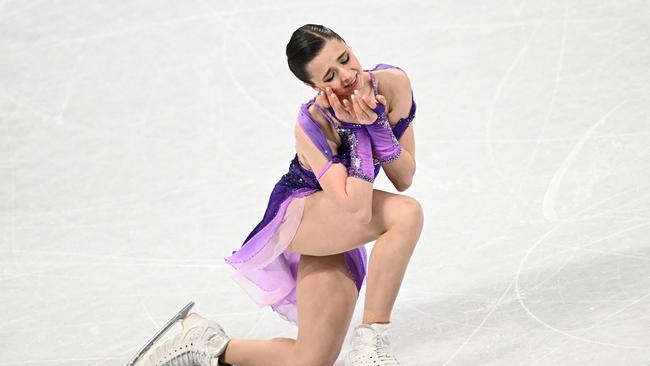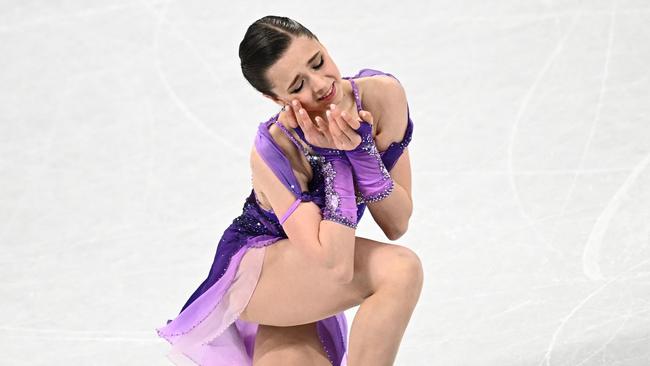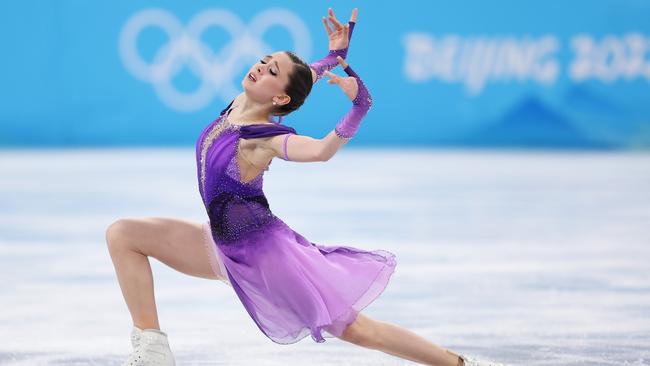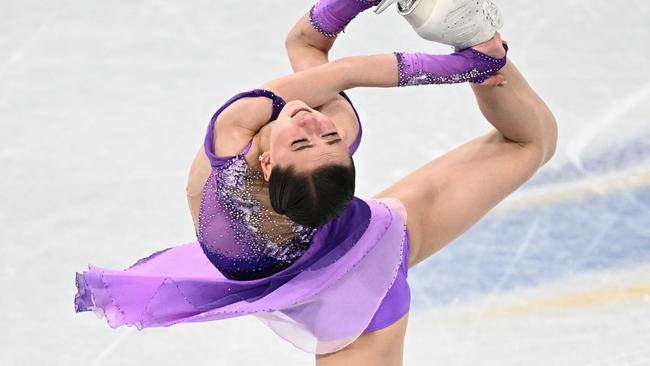Winter Olympics 2022: Russia doping case the tip of deep, dark iceberg in figure skating
Figure skating is renowned for its beauty and the grace of athletes, but behind the make-up and twists lies an ugly truth and sordid history, writes JULIAN LINDEN.

Winter Olympics
Don't miss out on the headlines from Winter Olympics. Followed categories will be added to My News.
The global outrage that has followed the shocking news that a teenage Russian figure skater may have been doped by the adults supposedly taking care of her is all too little and way too late.
It is the worst-kept secret in Winter Olympic sport that young female figure skaters are among the most abused athletes in all disciplines, yet nothing has been done to stop it.
In any other sport, the physical and emotional damage that has been inflicted on these athletes would be an international scandal.
But it’s allowed to continue — right in front of everyone’s eyes — because it’s box-office gold for the International Olympic Committee and its broadcast partners.

Thursday’s final in Beijing will be no different — with all eyes on the Russian starlet Kamila Valieva — who has controversially been allowed to compete despite recently testing positive to a banned substance.
You can bet that the television networks will be licking their lips at the monster ratings the final is sure to deliver but take a close look at what’s really taking place on the ice and you’ll see a sport that is shamelessly exploiting tiny teenage girls.
And it starts with the way they are dressed.
While male skaters wear long trousers, the young girls that make it to the Olympics wear skimpy, tight-fitting outfits and mini skirts that expose their briefs and inner thighs.
Too young to legally enter a nightclub, they take to the ice wearing lipstick, fake eyelashes and nail polish.
Child protection groups have called for an end to the dress-to-impress culture which they say sexualises young competitors instead of prioritising their health but their complaints have fallen on deaf ears.
You’ll notice figure skaters don’t wear helmets to protect themselves from concussion when they fall, even though skating has one of the highest rates of concussion of any sport in the world.
But in every other Winter Olympic sport that’s played on ice, other than curling, it’s mandatory for competitors and officials to wear protective headgear because ice is a deadly surface to fall on.
The idea that figure skaters are at less of a risk is wrong.

The ice they compete on at the Olympics is only 5cm thick and covers a slab of concrete embedded with metal pipes that help with refrigeration. There are no soft landings.
Valieva, the latest in a long line of teenage Russian superstar skaters, makes everything look so graceful and effortless but the complex jumps and quadruple rotations she does carry added risks that aren’t always noticeable.
When Olympic skaters spin, they turn so fast that blood rushes into their heads, causing nosebleeds and bursting tiny vessels in the whites of their eyes that the television cameras don’t — or won’t — show.
But it’s what happens away from the television cameras that people should really be outraged about.
In recent years, dozens of coaches around the world have been charged with sexual and physical abuse of skaters.
Jessica Shuran Yu, a talented Singaporean skater who was sent to China to train, revealed two years ago how she was repeatedly hit, kicked and body-shamed by her Chinese coach from the age of 11.

Others have lifted the veil of secrecy around body shaming, which is rampant in the sport because female competitors are pressured into staying small and light so they can perform more spins.
Yulia Lipnitskaya, who won gold in the team event for Russia at the 2014 Sochi Olympics at age 15, was diagnosed with anorexia.
And there are countless other Russian girl skaters who have battled serious depression.
Alarmed by the burnout rate and injuries to teenage skaters attempting dangerous jumps, particularly young Russians who almost never make it past one Olympics, one of the key proposed was that the minimum age of Olympic skaters be raised from 15 to 17.
Valieva is 15, so it was no surprise that Russia objected to the proposal and it was taken off the table for the Beijing Winter Olympics.
More Coverage
Originally published as Winter Olympics 2022: Russia doping case the tip of deep, dark iceberg in figure skating





